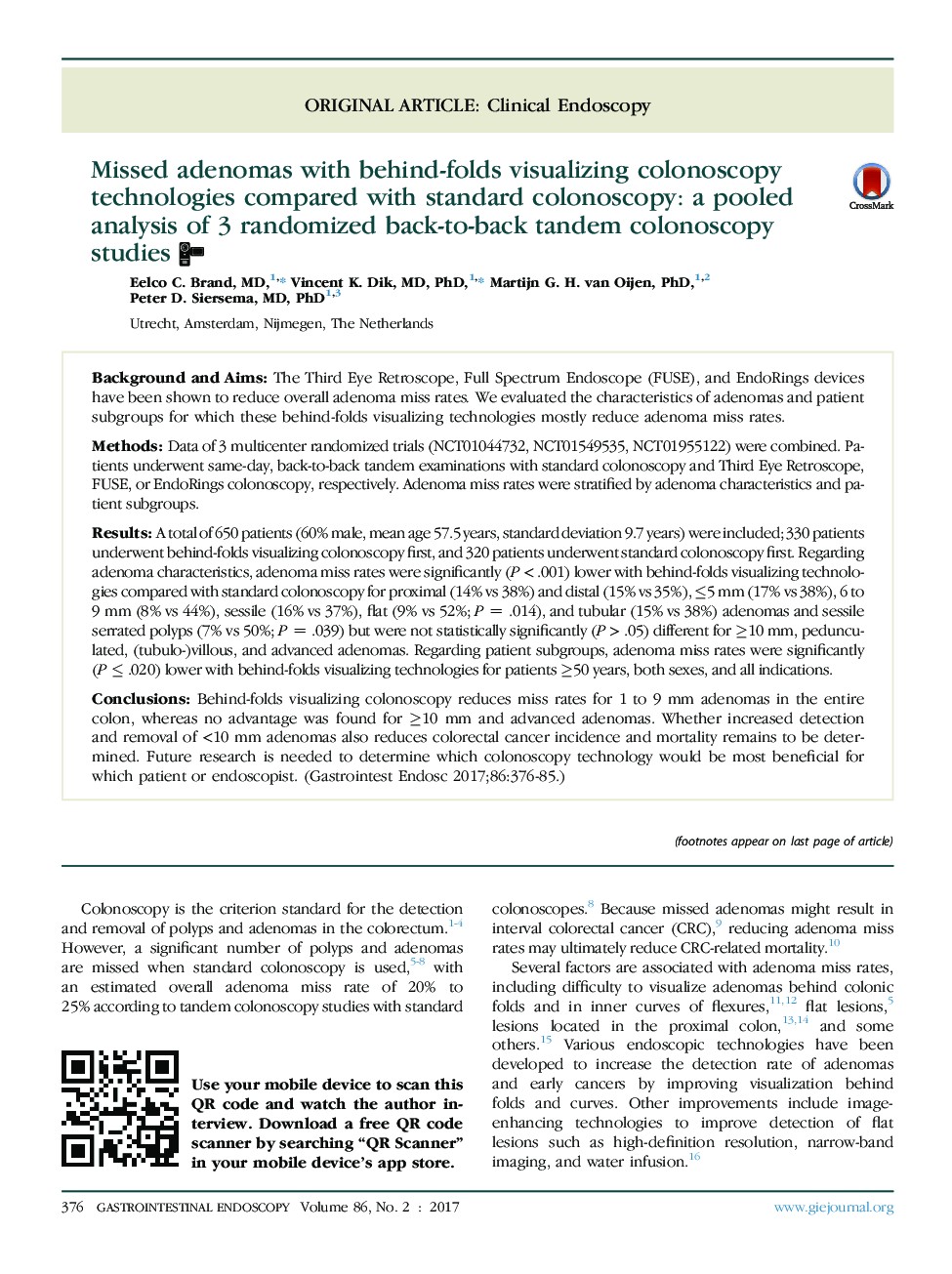| Article ID | Journal | Published Year | Pages | File Type |
|---|---|---|---|---|
| 5659432 | Gastrointestinal Endoscopy | 2017 | 12 Pages |
Background and AimsThe Third Eye Retroscope, Full Spectrum Endoscope (FUSE), and EndoRings devices have been shown to reduce overall adenoma miss rates. We evaluated the characteristics of adenomas and patient subgroups for which these behind-folds visualizing technologies mostly reduce adenoma miss rates.MethodsData of 3 multicenter randomized trials (NCT01044732, NCT01549535, NCT01955122) were combined. Patients underwent same-day, back-to-back tandem examinations with standard colonoscopy and Third Eye Retroscope, FUSE, or EndoRings colonoscopy, respectively. Adenoma miss rates were stratified by adenoma characteristics and patient subgroups.ResultsA total of 650 patients (60% male, mean age 57.5 years, standard deviation 9.7 years) were included; 330 patients underwent behind-folds visualizing colonoscopy first, and 320 patients underwent standard colonoscopy first. Regarding adenoma characteristics, adenoma miss rates were significantly (P < .001) lower with behind-folds visualizing technologies compared with standard colonoscopy for proximal (14% vs 38%) and distal (15% vs 35%), â¤5 mm (17% vs 38%), 6 to 9 mm (8% vs 44%), sessile (16% vs 37%), flat (9% vs 52%; P = .014), and tubular (15% vs 38%) adenomas and sessile serrated polyps (7% vs 50%; P = .039) but were not statistically significantly (P > .05) different for â¥10 mm, pedunculated, (tubulo-)villous, and advanced adenomas. Regarding patient subgroups, adenoma miss rates were significantly (P ⤠.020) lower with behind-folds visualizing technologies for patients â¥50 years, both sexes, and all indications.ConclusionsBehind-folds visualizing colonoscopy reduces miss rates for 1 to 9 mm adenomas in the entire colon, whereas no advantage was found for â¥10 mm and advanced adenomas. Whether increased detection and removal of <10 mm adenomas also reduces colorectal cancer incidence and mortality remains to be determined. Future research is needed to determine which colonoscopy technology would be most beneficial for which patient or endoscopist.
